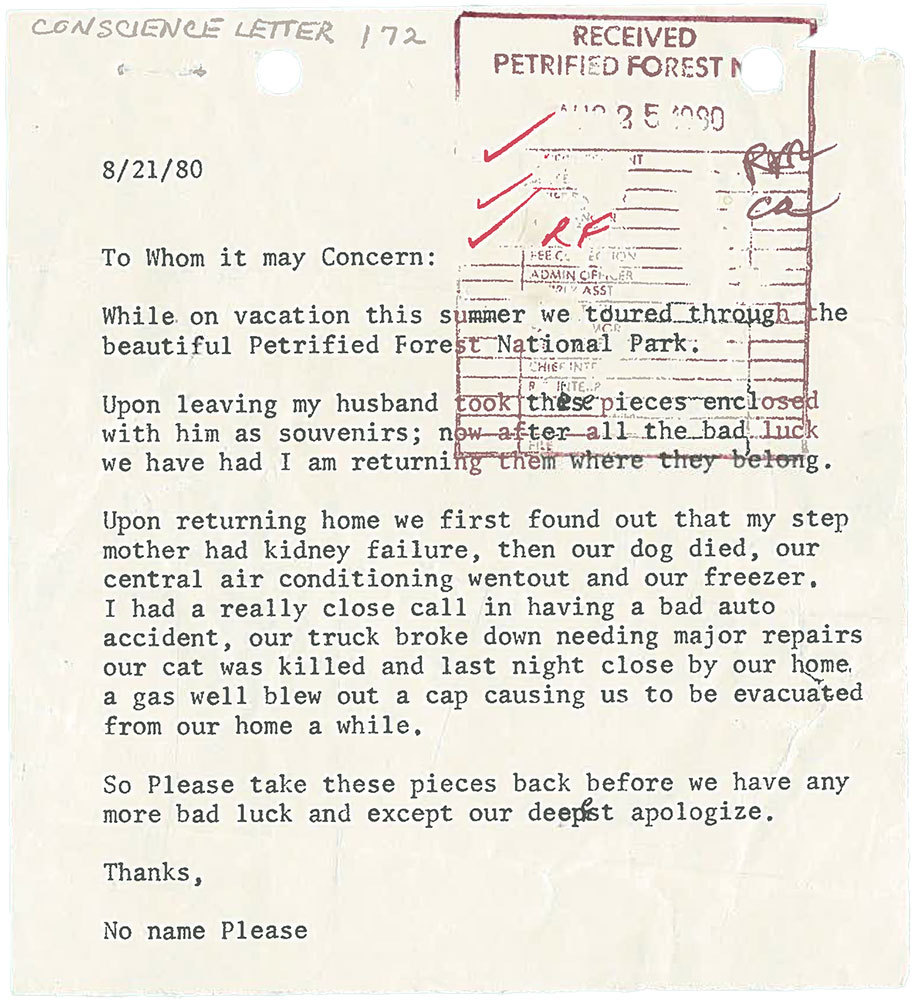Linkfest #38: Garlic Hackers, the "Ignorosophere", and The Upside of Societal Collapse
Hello people!
It’s time for "the opposite of doomscrolling” — my next Linkfest, in which I descend into the Plutonian mine-shafts of the Internet and bring up the finest gems of science, culture and technology, just for you.
If you’re a subscriber, thank you! If not, you can sign up here — it’s a Guardian-style, pay-whatevs-you-want affair; the folks who kick in help keep the Linkfest free for everyone else.
And: Please share this email with anyone who'd enjoy it.
Let’s begin ...
1) 💿 Zoetrope vinyl record

The band ATLiens has released its latest album Leaving the World Behind, and the vinyl edition doubles as a zoetrope. If you start it running and view the spinning disk via the iPhone app “ilumicope”, you’ll see the looping animation above.
You can get the vinyl for $80, and here’s a longer video that shows both sides of the album and more closeups.
I’m not sure I’d pony up $80 for this, but I offer a crisp salute at such a display of positively Victorian nerdery.
2) 🪨 Book of letters apologizing for stealing rocks from a national park

The Petrified Forest is a national park located in Arizona, famous for having tons of gorgeous rocks made from petrified wood. You’re not supposed to remove any rocks from the forest, but many visitors can’t help themselves. They steal some.
The rocks are quite gorgeous — here’s a sample …

Apparently, some of these thieves are overcome with remorse — so they mail the rocks back to the park administration, usually with a letter that apologizes for their actions and tries to explain why they did it. Often they’re convinced stealing the rock gave them bad luck.
Ryan Thompson and Phil Orr discovered these letters and made a book out of them — Bad Luck, Hot Rocks. As they write …
The content of each letter varies, but writers often include stories of misfortune, attributed directly to their stolen petrified wood. Car troubles. Cats with cancer. Deaths of family members. For many, their hope is that by returning these rocks, good fortune will return to their lives. Other common themes include expressions of remorse, requests for forgiveness, and warnings to future visitors.
During the spring of 2011 on a chance trip to the Petrified Forest, I encountered a small display of these letters in the Rainbow Forest Museum. I was immediately drawn to them for their humor, heartbreak, and humility, and soon discovered that these few letters represented just a tiny fraction of the more than 1200 pages in the park’s archives. Despite the wishes expressed in the letters, and the best intentions of their authors, the returned rocks don’t quite make it back to their former homes — at least not in the way the senders may have hoped. Because of their unknown provenance, these specimens can not be scattered back in the park—to do so would be to spoil those sites for research purposes. They are instead added to the park’s ‘conscience pile,’ which sits alongside a private gravel service road, a bit of dramatic irony that only furthered my interest in the phenomenon. And so, with a rough idea for this book, Phil and I returned during the summer of 2012 to begin reading through the conscience letter archive and to photograph the returned and confiscated rocks. Included here is our selection of some of the most intriguing, engaging, and beautiful letters, along with photographs from the conscience pile.
Alas, the book seems to be out of print, but Thompson and Orr have posted pix of many of the letters — and the rocks, which are gorgeous — on their site here. They’re really mesmerizing to read.
Also: Thompson did a similar book about objects returned to a Hawaii volcano park, and it’s still for sale here! He’s posted a lot of his other amazing art projects on his site here — all well worth checking out.
3) 🌋 The upside of societal collapse

The collapse of a civilization seems like a bad thing, yes?
Whenever we read about societal collapse — like the end of the Roman empire, or the Akkadian Empire of 2000 BCE, or even many parts of Europe during the Black Plague — we hear about it from the perspective of the folks ruling the society. They’re the ones who wrote the history of the time, right? So the kings and their courts complain about civic rule falling apart, and a “golden age” of wealth and art being destroyed.
A new generation of historians is questioning this entire story. As they point out, social collapse may suck for the ruling elites — because, of course, they don’t get to rule any more. But for the hoi polloi? Research is finding that everyday people — serfs, peons, farmers, day laborers — often become healthier and wealthier after an empire falls apart.
Consider the case of the Late Bronze Age collapse of 12th century BCE. When kingdoms fell apart, everyday people got taller — indicating they were now eating better …
In the space of a century or two, the Mycenaeans (the palace-dwelling overlords of Greece) fell apart and gave way to the Greek dark age, the pharaohs of the New Egyptian Kingdom lost power, and the Hittite Empire fractured into a set of squabbling rump states. Yet, despite being called a collapse, it was no apocalypse, nor even an entirely bad thing for citizens.
In Mycenaean Greece, kings were on average 6 cm taller than their peasant counterparts (172.5 cm, compared with 166.1 cm). Similarly, pharaohs and their wives (in a sample of 31 royal mummies) were taller than men and women in the general ancient Egyptian population. Once these empires fell apart, the heights of men began to grow across the Eastern Mediterranean, while the heights of women, which had been increasing slowly, accelerated.
The same holds true of the Roman Empire. Everyday folks who lived inside the empire were shorter and had more cavities than the “barbarians” who lived outside. When Rome fell? Those peons also got taller and healthier ...
Before Rome’s rise, people across the Italian peninsula were growing taller, but this slowed dramatically under the empire: citizens were 8 cm shorter than they might have been if this prior growth had continued. Even during Rome’s golden age, those who lived beyond the empire were taller. There is a truth to the trope of the hulking, muscle-bound barbarian. After the fall, skeletons grow taller across continental Europe, and dental caries and bone lesions decrease.
All these quotes come from this excellent essay by Luke Kemp. He’s the author of Goliath’s Curse: The History and Future of Societal Collapse — one of the major books that’s currently making the argument that the collapse of an empire can be, on balance, pretty good for most people. As Kemp notes, empires may produce fantastic works of art and architecture — but they’re nearly always horribly unequal, with a tiny amount of elites hoovering up most of the wealth, leaving crumbs for the peons. When the empire collapses, wealth becomes more evenly spread.
I’m ordering Kemp’s book now!
4) 👾 Addictive “dodge the dots” game

Behold “Dodge This”, a game where you have one simple goal: Move the big green dot around the screen to avoid the onrushing smaller red dots.
Things start off pretty calm in the first few seconds, but quickly become nutty. It’s like a super-twitchy version of Asteroids. Maybe they should have called it “The Kessler Syndrome”.
It’s weirdly addictive, though! I lasted about 45 seconds when I played it on my phone, and only 39 seconds when I played on my laptop.
The leaderboard boasts people playing for 9,213 seconds, or 153 minutes, which seems not merely long but suspiciously so; the product of “tool assisted” gameplay — or as we say in the original Latin, cheating.
5) 🎶 Try Microsoft’s procedural music-generating tool from 1997

In 1997, Microsoft quietly released “Microsoft Music Producer” — a tool that lets you generate royalty-free music loops. I’d never heard of it before, but it is pretty wild.
See that interface above? You pick a genre, a style of instrumentation, a key and a tempo — then you hit play and chill out while helpful robots play it for you. You can pick how long the song should be, and what type of structure it should have (peaking? random?). Even cooler, while the song is playing you can drag the instruments around to increase or decrease each one’s volume, or pan them left to right — mixing the track on the fly.
There’s no modern neural-network AI at work here, just old-school hand-crafted algorithms. And randomness: Every time you hit “play” you get a slightly different composition!
You can see it in action via Harke's YouTube review, or read the Frank’s World review, in which Frank notes that …
… capturing these algorithmically generated pieces proved challenging. MSMP, in its procedural wisdom, would render slightly different versions with each composition. This meant recording had to be done in one full sweep—no piecing together of separately recorded instruments if they were to synchronize perfectly. With the entire MIDI sequence exported using the exact Microsoft Sound font from MSMP’s heyday, the project aimed to retain as much of the original texture as possible.
The creative process was, unexpectedly, fraught with reveries and revelations. Lyrics and melodies wandered in, guided at times by the strangely charming outputs of MSMP. After numerous iterations, recordings, and mix adjustments—including vocal harmonies and an eventual electric guitar addition—the project evolved significantly from its algorithmic origins, yet still remained a homage to its unique source.
This exploration was not just about the technology or the music it produced; it was a reminder of the playful curiosity that often drives innovation. MSMP, for all its quirks, stood out as a testament to a time when adding something as unconventional as a music composer in a web development tool seemed perfectly reasonable.
Want to try it out yourself? You can download it via the Internet Archive; the page includes installation instructions.
I just spent the last ten minutes noodling around and it’s pretty fun! Mostly I enjoyed picking an ambient genre, then muting several of the instruments to make the arrangement more minimalist; the generator tends to default on compositions that are too busy for my tastes. It’s easy to mix it into something more chill, though, which is a credit to the flexibility of this weird tool. The whole vibe is very 80s/90s video-game.
Indeed, I’m now thinking of creating some trippy little retro loops to use as the bones around which to build actual modern songs, with traditional guitars, vox, etc. I’ll keep y’all posted if I do so …
6) 🧄 Garlic hackers

For the six thousand years that humanity has been eating garlic, we’ve farmed it asexually. You shove a garlic clove in the ground and it produces a new garlic plant.
Asexual farming is convenient, but it gradually kills biodiversity: Because the new plants are clones of the previous ones, they don’t benefit from the enhanced adaptations you get from sexual reproduction.
So in the last 15 years, a subculture of “garlic nerds” has emerged — people who are painstakingly attempting to produce garlic that flowers and reproduces sexually. Those little black specks on the plate above? They’re garlic seeds produced by Avram Drucker.
Over at Offrange, Katherine Cusumano has written a fascinating profile of these garlic hackers:
About 15 years ago, a Missouri farmer and former union painter named Mark Brown began trying to coax true seeds from his garlic — an attempt, essentially, to undo thousands of years of domestication. (As an aside: What’s typically called garlic seed is not actually a seed, but rather the clove planted to grow a bulb. A true seed, on the other hand, is the small black sphere produced when pollen meets stigma.) It took years for the plants to cough up just a few small dark orbs. Only about 8 percent of them germinated. “You build your history of true garlic seed on failure,” Brown told me this spring, frogs chirping in the background. “That’s your foundation.”
It’s not easy! These folks have to manually cross-pollinate the plants, down on their hands and knees, for months and years on end. The upside, though, is new variants of garlic that can be “pleasantly spicy”.
They’re also restoring crucial biodiversity. As Cusumano writes, this plant-hacking …
… could also prove critical to the future of garlic as a crop. A 2004 study showed that around 50 percent of garlic varieties grown under different names are genetically identical. Generations of cloning have reduced its diversity, making it vulnerable to disease and climate change. Haggerty and Mark Brown both said they know some farmers who can’t grow garlic due to a fungus in their soil. Seeds, on the other hand, fuse genetic material from both pollinator and pollinated, increasing the crop’s resilience by introducing new combinations of traits. Some true seed advocates note that this genetic diversity will also be an asset as the planet grows hotter and extreme weather events become more common.
7) 🐸 How a 1958 album of frog sounds became a multi-decade hit

In 1958, Charles Bogert — a frog expert, or “herpetologist” — released the album Sounds of North American Frogs. It was on the Folkways Records label, and included 92 tracks with the vocalizations of 57 different frogs and toads. Sample tracks: “Scream of the Southern Leopard Frog”, “Rain Song of the Squirrel Treefrog”.
Unexpectedly, it became a hit. As Ellen Wexler writes on the Smithsonian site …
Sounds of North American Frogs was intended for a scientific audience, but something about it appealed to mainstream American listeners. “If there is a frog in your backyard, and you’re curious to know what is on his mind, this record is for you,” wrote the Cincinnati Post. Sports Illustrated described it as a “swampland opus” and called Bogert “the Toscanini of the frog world.”
Later on Folkways closed down and its catalogue was sold to the Smithsonian itself. In 1998, they re-released Sounds of North American Frogs — and this time it became even more of a hit:
In honor of the label’s 50th anniversary in 1998, Folkways re-released Sounds of North American Frogs as a CD. Seeger, one of the experts hired to run the label, picked the album to advertise the eccentric charm of Folkways’ holdings. He didn’t expect it to sell.
But the record was a hit. As one reviewer put it, “Fans aren’t sure what kind of music to list it under, but it’s hopping up the charts anyway.” The album also became a fixture of college radio. “All these college stations for about a year were playing ‘Frog of the Day,’” says senior archivist Jeff Place, who ran Folkways with Seeger. “We were kind of shocked.”
Part of what drove this second wave of popularity, as Cara Giamo writes in Atlas Obscura, was the emerging blogosphere and digital-music sampling scenes …
Virginia Tech sociologist and WUVT radio DJ Liam Weikart (aka Dr. Moolenbeek) remembers downloading the record online in the early 2000s, “in the context of experimental music,” he says. “The online blogosphere for this kind of thing was raging” at that point, and it was easy to grab mp3s of “weird field recordings,” like this or fellow Folkways classic Sounds of the Junk Yard. (Bogert’s approach wasn’t to Weikart’s specific taste: “Any single recording of any frogs on there, I would take 60 minutes of that over hearing a guy talk,” he says. But he did just buy it on Bandcamp anyway, for old time’s sake.) Musicians continue to engage with the record: Electronic duo Matmos just released an album made up of samples from a variety of Smithsonian Folkways records, and hardcore legend Henry Rollins regularly begins his KCRW radio show with Bogert’s frogs.
In 2023 Smithsonian released the album yet again — on Bandcamp — so you can go listen to it right now!
(BTW, that piece at Smithsonian is about more than just the frog album — it’s a meditation on the enduring popularity of “sounds of nature” recordings, and it talks about several other hit records made from birdsong and whale music. The whole scene is really intriguing.)
8) 🚗 Wedge cars of the 1960s and 70s

The Petersen Automotive Museum in LA has a new exhibit called “The Wedge Revolution” — devoted to the angular wedge-shaped cars of the 1960s and 70s.
One stretch of time remains largely uncelebrated because it was overshadowed by global events and safety developments that put a damper on automotive energy in much of the world. This period—the 1970s (or, more broadly, 1965-1985)—was, in fact, a remarkable era of automotive design and the ultimate inverse reaction to the curvaceous and excessive styling so prevalent in the decades bracketing WW2. Eschewing the chrome and fins that dominated the cars of the late 50s and early 60s, influential designers in this period emphasized angular silhouettes and faceted planes, with body triangulation from front to rear in a style most commonly referred to as the “wedge.”
If you’re in LA, go check it out; the rest of us can look at a gallery over at design boom.
Given that I am in a country band called The Delorean Sisters, I have a personal interest in wedge-car design, lol.
(I’ve actually only ever seen a Delorean up close once, while visiting Toronto a few years back. I was refueling my rental car at a downtown gas station when someone pulled up in a mint-restored Delorean, opened the gull-wing door, and stepped out. I can confirm: Up close, it’s a breathtakingly cool-looking car.)
9) 🔬 A scientific explanation for the myth of Hermaphroditus

In ancient Greek/Roman mythology, Hermaphroditus was bathing naked in a lake when Salmacis — a nymph — became besotted with him. She grabbed Hermaphroditus, held him close, and prayed to the gods that they would never part. The gods answered her prayer and fused the two into one person — half male, half female.
When the Roman poet Ovid includes this story in his epic poem The Metamorphoses, he adds a fascinating detail: Hermaphroditus asks that the lake itself become permanently imbued with the power to feminize men.
When he saw now that the clear waters which he had penetrated as a man had made him a creature of both sexes, and his limbs had been softened there, Hermaphroditus, stretching out his hands, said, but not in a man’s voice, “Father and mother, grant this gift to your son, who bears both your names: whoever comes to these fountains as a man, let him leave them half a man, and weaken suddenly at the touch of these waters!” Both his parents moved by this granted the prayer of their twin-formed son and contaminated the pool with a damaging drug.
Fun story!
In a paper in the scientific journal Hormone, they note that ancient Greece and Rome did in fact have a lake known as “Salmacis”. What’s more, many ancient writers and philosophers — at the time — described how “the streams dripping in the cave tempers the savage minds of men” (as one ancient inscription goes). Apparently, even back then, exposure to the water of Salmacis was known to have some sort of effect on guys.
If that were actually the case, what could possibly have been the cause of it? The scientists consider several possibilities, and find only one plausible: Fungal organisms in the water that produced “zearalenone”, or ZEA — a mycoestrogen.
It has been shown that even very small amounts of ZEA and α-ZOL can significantly limit the production of testosterone in the testicles’ Leydig cells in mice [20]. Studies at the cellular level have shown that ZEA can restrict cell proliferation and growth in the ovaries and testes (apoptotic function) through the regulation of the cell cycle, cytoskeletal changes, DNA methylation, and oxidative stress [17].
The effect of ZEA has particularly been demonstrated in pigs, sheep, horses, and cows … affected male animals demonstrate significant breast enlargement, testicular atrophy, decrease in testosterone levels, decrease in aggressive behavior and libido, impaired spermatogenesis, and infertility.
As they note, the climate around ancient Salmacis was well-keyed for the production of ZEA. So it’s possible the water was so deeply infused with these estrogen-like chemicals that it could, with enough exposure, have an affect on men.
Mind you, as the authors note, this is all conjecture! First off, they don’t have any medical records proving that the water of Salmacis really did affect men this way. And secondly, the lake dried up long ago, so we can no longer test the water.
But it’s an intriguing thought experiment, and I’m tickled at the idea that there was some natural phenomenon that inspired these ancient legends.
The whole paper is here free to read.
(Oh, and: Speaking of Ovid, I’ve been reading the new translation of The Metamorphoses by Stephanie McCarter and it is amazing.)
10) 🚀 Massive free archive of images from NASA’s Ames lab

Located out in Silicon Valley, the Ames Research Center is where NASA does cutting-edge research — including operating the world’s largest wind tunnel, with speeds of up to 300 mph.
Over the years, Ames has produced a mountain of images documenting its work, and it’s all in the public domain. The Internet Archive hosts 5,000 of the pictures, and data journalist Jon Keegan recently went spelunking to create a gallery of some of the awesome shots …
… like that image above, of the aforementioned world’s-biggest-wind-tunnel; or funky experimental aircraft like this …

… or trippy artwork of our high-tech space-age future …

Man, I want to found a synthwave band just so I can use that image for my first album cover. And hey, legally, I could! All NASA images are in the public domain, so we can use ‘em any way we prefer.
Go check out Jon’s gallery, then go look at the huge full archive.
11) 🏡 Why people think building more housing will make the housing-affordability crisis worse

Most people understand that if 1) a product is scarce and 2) demand is high, producers jack the price up. And vice versa.
For example, if it’s pouring rain in a town of 1,000 people and there are only 100 umbrellas for sale, umbrella-sellers will goose prices sky-high. In contrast, if you’ve got 2,000 umbrellas for sale in a wet town of only 1,000 people? The umbrella-sellers have to drop prices if they want to unload their inventory.
Supply and demand! When you survey the average American about supply and demand, they understand the dynamic quite well.
Except for one interesting exception: Housing.
A group of economists recently surveyed Americans and asked them: Imagine a city suddenly grew its total housing by 10%. What, they asked, would happen to the price of housing overall? Would it go up or down?
Only a minority of the respondents said the new boom in housing would reduce prices. Just as many people said it would increase the cost of housing:
Only one-quarter to one-third of respondents predicted that the housing supply shock would reduce prices or rents for existing homes, whereas one-third to one-half said the shock would lead to higher prices.
In comparison, when the economists asked about other markets — like, say, cars or plumbers — the great majority of people said yeah, sure, supply affects demand. Increase supply, and prices will go down.
So they believe that works for cars and plumbing and nearly everything. They just don’t believe it works with housing.
Why? It turns out the survey respondents believed that when housing prices are high, it’s because of forces other than supply and demand. Specifically, they blamed things like greedy landlords and developers and Wall Street’s massive buying-up of housing.
So, as the survey respondents argued, if you want to bring the cost of housing down, building more housing won’t work. You have to tackle the greed, and you also have to demand that developers specifically build lower-income units:
… our survey of laypeople, price controls and demand subsidies received much more support than any supply-side measure. More than 85 percent of respondents backed rent control, property-tax limits, downpayment subsidies, and restrictions on Wall Street ownership of housing. Large supermajorities also want to require developers to provide price-restricted middle-income or lower-income housing. Policies to reduce development costs and zone for more market-rate housing drew the least support and were also regarded as least effective.
(BTW, these opinions were pretty commonly shared both by renters and by homeowners.)
I’m totally fascinated by this!
I was really surprised to see the mass support for rent-control, and for subsidies to build lower-income housing. I was even more pleased to see people angered by Wall Street firms buying up houses as investments; the financialization of housing is a real nightmare, and it’s cool to see this is a widely understood problem. Greed really is part of the picture.
But if many Americans also believe that building more housing will make the problem worse — now, that’s an interesting stumbling block in grappling with the housing crisis. Political leaders across the political spectrum are finally now realizing that America needs to build a ton more units of housing. It’s taken them decades to slowly arrive that that conclusion. But it’ll be hard to move forward if the majority of Americans simply don’t believe it’ll help.
12) 💻 Try “Servo”, an experimental browser built using Rust

The world of Internet browsers is dangerously centralized. It’s dominated by Chromium, Google’s browser engine: That’s the engine that powers Chrome, of course, but it’s also behind many supposedly “alternative” browsers, like Vivaldi and Opera and Brave. Hell, even Microsoft uses Chromium for its Edge browser.
The two big true alternatives are Firefox and Apple’s Safari, which use different rendering engines. But the Mozilla Foundation is facing so many financial pressures that people worry about Firefox’s future.
So, it’d be nice to have some new browser engines, yes?
The good news is, there’s one in the wings! It’s Servo — a browser engine built entirely using the new-ish programming language Rust. Originally backed by Mozilla, it’s now part of the Linux Foundation.
It’s still in the early stages of development, but you can give it a whirl. The development team publishes regular builds, all downloadable here.
Over at The Spacebar, Corbin Davenport took it for a whirl, and found that …
… most sites have at least a few rendering bugs, and a few are completely broken. Google search results have many overlapping elements, and the MacRumors home page crashed after some scrolling. Sites like Wikipedia, CNN Lite, my personal site, and text-only NPR worked perfectly.
There are also some demo pages on the Servo website to show off the engine's graphical capabilities. The Dogemania test ran at a smooth 60 FPS on my M4 Pro MacBook Pro until reaching around 400 images, and the Particle Physics test averaged around 55 FPS. Safari 18.5 on the same computer could handle over 1,500 images on Dogemania and roughly 60 FPS on Particle Physics. Servo was running under x86 emulation since there are no ARM builds for macOS yet, so it wasn't a completely fair fight in performance.
I just myself tried Servo on my Mac. It’s not bad! Simple sites loaded fine (including The Linkfest!) — and even some complex, javascript-heavy ones worked, like the New York Times main page. But others crashed completely.
I’d love for Servo to find some serious sponsorship and become a full-fledged browser. It’d really help diversify the ecology of the web.
13) 🗝️ A final, sudden-death round of reading material
Storing data in birdsong. 🗝️ “Cope cages”. 🗝️ Lab-grown foie gras. 🗝️ Emoji Bigfoot. 🗝️ When recursive H3 tags run amok. 🗝️ Prohibition’s effect on oyster consumption. 🗝️ Moisture farming. 🗝️ A chocolate wristwatch. 🗝️ Robotic clothes-folding bedside lamps. 🗝️ 1-star LA hotel gets historic designation. 🗝️ Using AI to help resurrect a dying language in Japan. 🗝️ ebike with a “wheelie button”. 🗝️ The Codex Seraphinianus. 🗝️ In defense of Mahler’s use of the cowbell. 🗝️ An Airport for Aliens Currently Run by Dogs, the video game. 🗝️ “Recto”, a 2D programming language. 🗝️ The “Sabu Disk”. 🗝️ The twelve types of medieval drunk. 🗝️ Dual-screen cyberdeck. 🗝️ Lichen that helps concrete self-heal. 🗝️ How leaky water pipes feed urban trees. 🗝️ Quartz crystal boutonniere. 🗝️ “Safe, harmless atomic bomb” toy for kids. 🗝️ Creepy “numbers station” in 1K of Javascript. 🗝️ Women’s suffrage board game. 🗝️ Etymology of “skulduggery”. 🗝️ This Wikipedia article got translated into 335 languages. 🗝️ Clams on Prozac. 🗝️ Which synthesizer was used for the solo in “Girls Just Want To Have Fun”? 🗝️ Hittite cuneiform bird-divination tablet. 🗝️ Why 1980s arcade games had standalone music CPUs. 🗝️ Portable DIY text-to-braille printer. 🗝️ The people who maintain the Heaven’s Gate website. 🗝️ 1910’s failed attempt at American hippo-farming. 🗝️ Optimum coding line-length. 🗝️ Spirituality in the art world becomes cool. 🗝️ One-hertz water-clock. 🗝️ One million screenshots. 🗝️ Business card that runs a fluid simulation. 🗝️ A list of things Jane Austen disliked. 🗝️ The “ignorosphere”.
CODA ON SOURCING: I read a ton of blogs and sites every day to find this material. A few I relied on this week include Strange Company, Hackaday, Messy Nessy, Numlock News, the Awesomer, the Morning News, and Mathew Ingram’s “When The Going Gets Weird”; check ‘em out!